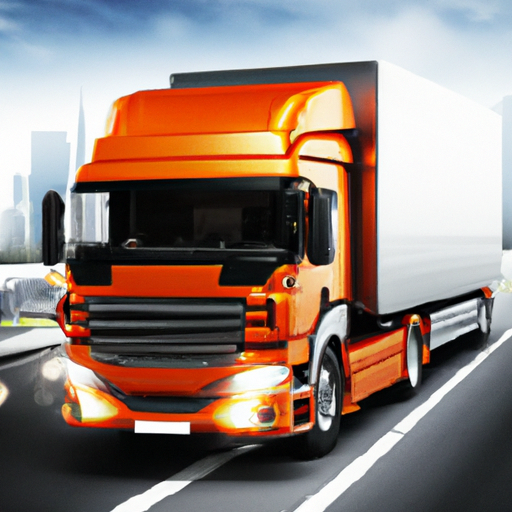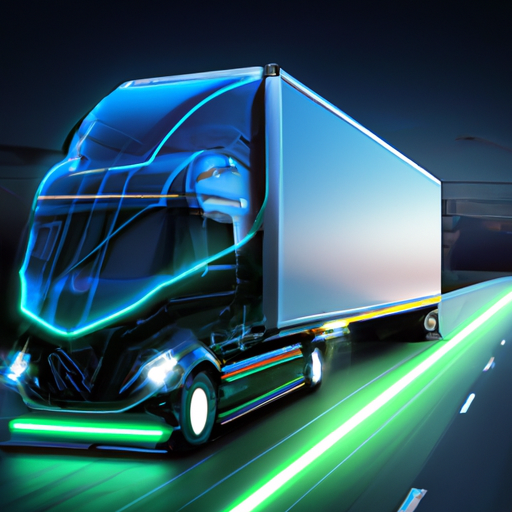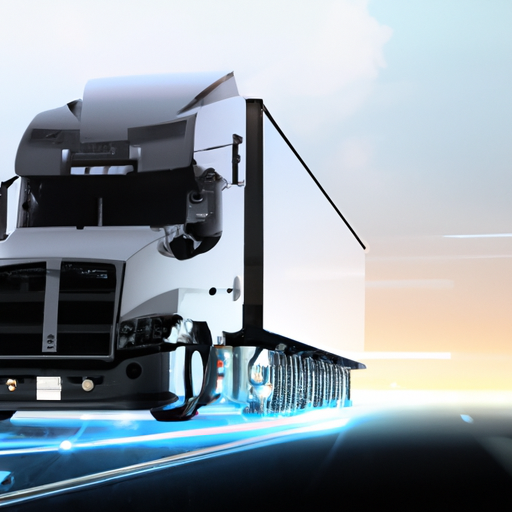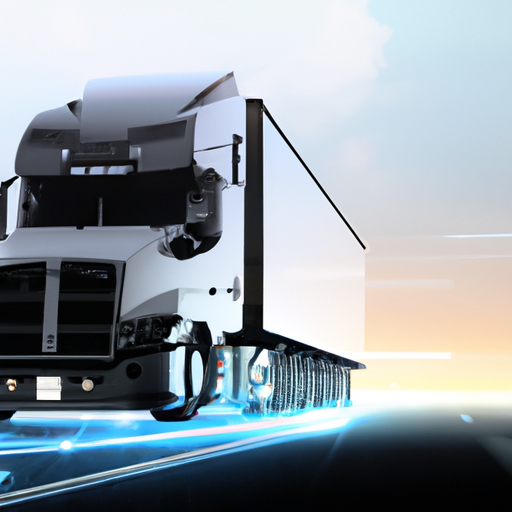Trucking Industry Trends
Trucking Industry Trends provides a quick glimpse into the ever-evolving landscape of the trucking industry. From technological advancements to shifting consumer demands, this article highlights the key trends shaping the future of trucking. Whether you’re a trucking enthusiast or in the business, this concise overview offers valuable insights and foresight into the dynamic world of transportation on wheels.

Table of Contents
1. Impact of Technology on the Trucking Industry
1.1 Autonomous Driving and Automation
The trucking industry is experiencing a significant transformation due to advancements in technology, particularly in the areas of autonomous driving and automation. Autonomous driving technology has the potential to revolutionize the industry by improving safety, efficiency, and productivity. With the development of self-driving trucks, the need for human drivers may decrease in the future, leading to reduced labor costs and increased efficiency in logistics operations. Additionally, automation in the form of robotics and artificial intelligence can streamline various tasks in the trucking industry, such as loading and unloading cargo, inventory management, and maintenance.
1.2 Internet of Things (IoT) in Trucking
The Internet of Things (IoT) has brought about a new era of connectivity in the trucking industry. IoT technology enables trucks and their components to be interconnected, allowing for real-time monitoring and data collection. By leveraging IoT devices and sensors, trucking companies can track the condition of their vehicles, monitor fuel consumption, optimize routes, and even predict maintenance needs. This level of connectivity not only improves operational efficiency but also enhances driver safety by facilitating the monitoring of driver behavior, fatigue detection, and accident prevention.
1.3 Big Data and Analytics in Fleet Management
Big data and analytics have become crucial tools in fleet management. With the enormous amount of data generated by trucks, such as GPS coordinates, engine performance, and fuel consumption, companies can gain valuable insights into their operations. By analyzing this data, trucking companies can identify patterns, optimize routes, predict maintenance needs, and make informed decisions to streamline their operations and reduce costs. Moreover, integrating big data with predictive analytics enables companies to anticipate demand, optimize load planning, and enhance overall operational efficiency.
1.4 Telematics and GPS Tracking
Telematics, a combination of telecommunication and informatics, is a technology that enables the remote collection and transmission of data in real-time. Telematics systems, often used in conjunction with GPS tracking, provide trucking companies with valuable information about vehicle location, speed, driver behavior, and engine performance. This technology allows companies to monitor and optimize their fleet operations, improve driver safety, and enhance customer service by providing accurate arrival estimates and real-time tracking updates. Telematics and GPS tracking also enable companies to detect and address issues promptly, such as identifying theft or unauthorized use of vehicles.
1.5 E-commerce and Last-Mile Delivery
The rise of e-commerce has had a profound impact on the trucking industry, particularly in the area of last-mile delivery. With the increasing demand for timely and convenient deliveries, trucking companies are adapting to meet the challenges posed by the e-commerce boom. Technology plays a crucial role in optimizing last-mile delivery operations, enabling companies to track packages, provide real-time updates to customers, and facilitate efficient routing and dispatching. Furthermore, advancements in technology have led to the development of alternative delivery methods, such as drones and autonomous vehicles, which may further revolutionize the last-mile delivery process in the future.
2. Environmental and Sustainability Initiatives
2.1 Adoption of Electric and Hybrid Trucks
As the world becomes more environmentally conscious, the trucking industry has been actively exploring ways to reduce its carbon footprint. One of the key initiatives is the adoption of electric and hybrid trucks. Electric trucks run solely on batteries, eliminating greenhouse gas emissions and reducing dependence on fossil fuels. Hybrid trucks combine an internal combustion engine with an electric motor, offering improved fuel efficiency and reduced emissions. By embracing electric and hybrid trucks, trucking companies can contribute to the global sustainability efforts and comply with stricter emission regulations.
2.2 Alternative Fuels and Reduced Emissions
In addition to electric and hybrid trucks, the trucking industry is also exploring alternative fuels and technologies to reduce emissions. Biofuels, such as biodiesel and renewable natural gas, offer a more sustainable and environmentally friendly alternative to traditional fossil fuels. These fuels can be derived from renewable sources and have lower carbon emissions. Trucking companies are increasingly investing in the infrastructure required to support the adoption of alternative fuels, including the construction of refueling stations and the development of partnerships with biofuel producers.
2.3 Sustainable Packaging and Logistics Practices
To further promote sustainability, trucking companies are focusing on implementing sustainable packaging and logistics practices. This includes utilizing eco-friendly packaging materials, optimizing packaging design to minimize waste, and adopting more sustainable transportation methods. For instance, companies are exploring the use of lightweight packaging materials to reduce fuel consumption and exploring intermodal transportation options to optimize route planning and reduce carbon emissions. By embracing sustainable practices, trucking companies can reduce their environmental impact and meet the growing consumer demand for eco-friendly solutions.

3. Driver Shortage and Retention Strategies
3.1 Aging Driver Workforce
The trucking industry is facing a significant driver shortage, primarily due to the aging workforce. Many experienced truck drivers are approaching retirement age, and there is a limited influx of young drivers to replenish the workforce. This shortage poses challenges for trucking companies, as it impacts their ability to meet customer demands and maintain optimal operational efficiency. To address this issue, companies are implementing various strategies to attract and retain drivers, including offering competitive wages, improved benefits packages, and enhanced training and development programs.
3.2 Increased Training and Development Programs
Recognizing the importance of skilled and well-trained drivers, trucking companies are investing in increased training and development programs. These programs aim to enhance driver skills, improve safety practices, and provide continuous professional development opportunities. Training programs may include defensive driving courses, specialized certification programs, and ongoing coaching and mentoring initiatives. By prioritizing training and development, companies can not only attract new talent but also retain experienced drivers by offering them opportunities for career advancement and skill enhancement.
3.3 Enhanced Compensation and Benefits
To remain competitive in the labor market and attract and retain drivers, trucking companies are revisiting their compensation and benefits packages. This includes offering competitive wages, signing bonuses, performance-based incentives, and comprehensive health and retirement benefits. Companies may also provide flexible work arrangements and lifestyle benefits to accommodate the needs and preferences of drivers. By offering attractive compensation and benefits, companies can improve driver satisfaction and loyalty, ultimately reducing turnover rates and ensuring a stable and skilled workforce.
3.4 Improving Work-Life Balance for Drivers
One of the major challenges in the trucking industry is maintaining a healthy work-life balance for drivers. Long hours on the road, away from family and friends, can lead to increased stress and burnout. To address this issue, companies are exploring strategies to improve work-life balance for drivers. This includes optimizing routes to reduce the time spent away from home, offering more flexible scheduling options, and providing access to amenities such as fitness facilities and rest areas. Moreover, technology advancements, such as driver communication apps and virtual meeting platforms, enable drivers to stay connected with their loved ones while on the road, enhancing their overall well-being and job satisfaction.
4. Safety and Regulations in the Trucking Industry
4.1 Compliance with Hours of Service Regulations
Safety is a top priority in the trucking industry, and compliance with Hours of Service (HOS) regulations is a critical aspect of ensuring driver well-being and preventing fatigue-related accidents. HOS regulations dictate the maximum number of hours a driver can work and the required rest periods. Trucking companies must implement systems and processes to monitor and enforce HOS compliance, ensuring drivers have sufficient rest and adhere to the regulations. Technology, such as electronic logging devices (ELDs), provides accurate and tamper-proof recording of driver hours, making it easier for companies to comply with HOS regulations and enhance overall safety.
4.2 Implementation of Electronic Logging Devices (ELDs)
Electronic Logging Devices (ELDs) play a crucial role in improving safety and compliance in the trucking industry. ELDs electronically record a driver’s hours of service, replacing traditional paper logbooks. This technology enables accurate and automated tracking of driving time, rest breaks, and other relevant data. ELDs provide real-time visibility into driver hours, allowing companies to proactively manage fatigue, optimize scheduling, and ensure compliance with HOS regulations. By mandating the use of ELDs, regulatory authorities aim to improve safety, prevent driver fatigue-related accidents, and enhance overall industry accountability.
4.3 Increasing Focus on Driver Health and Wellness
The well-being of truck drivers is a significant concern for the industry, and there is an increasing focus on promoting driver health and wellness. Companies are implementing initiatives to address driver health issues, such as providing access to fitness programs, offering healthy meal options at truck stops, and partnering with healthcare providers to offer comprehensive medical services. Moreover, advancements in technology have led to the development of wearable devices and mobile applications that track driver health metrics, such as heart rate and sleep patterns, enabling companies to proactively address health concerns and promote healthier lifestyles among their drivers.
4.4 Advancements in Truck Safety Technologies
Advancements in technology have led to the development of various truck safety technologies that enhance driver safety and prevent accidents. These technologies include collision mitigation systems, lane departure warning systems, adaptive cruise control, and cameras for blind-spot detection. These safety features help drivers detect potential hazards, alert them to unsafe driving behaviors, and intervene in critical situations to avoid accidents. Integrating these technologies into trucks not only improves driver safety but also reduces insurance costs and enhances overall operational efficiency by reducing downtime due to accidents and vehicle repairs.

5. Advances in Supply Chain Management
5.1 Just-in-Time Delivery and Reduced Inventory
Advances in technology have enabled the trucking industry to embrace just-in-time (JIT) delivery practices and reduce inventory levels in supply chains. JIT delivery involves delivering products exactly when they are needed, minimizing the need for large inventories. By leveraging real-time data and analytics, trucking companies can optimize delivery schedules, improve route planning, and ensure timely delivery of goods. This reduces inventory holding costs for businesses while enabling them to meet customer demands more efficiently. JIT delivery also minimizes waste and improves sustainability by reducing excess inventory and the associated carbon emissions.
5.2 Blockchain Technology for Enhanced Transparency
Blockchain technology is gaining traction in the trucking industry as a way to enhance transparency and traceability in the supply chain. Blockchain is a decentralized digital ledger that records and verifies transactions across multiple parties. By implementing blockchain solutions, trucking companies can create a transparent and immutable record of goods throughout the supply chain, from origin to delivery. This technology ensures the integrity and authenticity of information, reduces the risk of fraud, and enhances visibility for all stakeholders involved. With blockchain, customers can trace the journey of their goods, ensuring their authenticity and compliance with ethical and sustainability standards.
5.3 Integration of Artificial Intelligence in Logistics
Artificial intelligence (AI) is revolutionizing the logistics process in the trucking industry. By leveraging AI algorithms and machine learning, companies can optimize their logistics operations, improve demand forecasting, and enhance supply chain efficiency. AI-powered systems can analyze large volumes of data, identify patterns, and make accurate predictions, allowing companies to optimize route planning, manage inventory levels, and minimize delivery delays. AI also enables predictive maintenance of vehicles, reducing downtime and improving overall fleet performance. The integration of AI in logistics not only enhances efficiency but also reduces costs and improves customer satisfaction through faster, more reliable deliveries.
6. Impact of Trade and Economic Factors
6.1 Global Trade Agreements and Tariffs
Trade agreements and tariffs have a significant impact on the trucking industry, influencing cross-border trade and international logistics operations. Changes in trade agreements and tariffs can lead to fluctuations in the volume of goods being transported, affecting the demand for trucking services. For instance, the imposition of tariffs can result in reduced imports or exports, altering the demand patterns for transportation services. The trucking industry must closely monitor trade agreements, tariffs, and geopolitical events to adapt their operations and proactively address any challenges or opportunities that arise.
6.2 Changing Consumer Preferences and Market Demand
Consumer preferences and market demand play a crucial role in shaping the trucking industry. The rise of e-commerce, for example, has led to increased demand for quick and convenient deliveries. Trucking companies must respond to changing consumer preferences by investing in technology and adopting agile logistics strategies. Moreover, shifts in market demand for specific goods or sectors can impact the transportation industry, as certain industries may experience growth or decline. Companies must be proactive in identifying emerging trends and aligning their operations to meet the evolving demands of the market.
6.3 Economic Fluctuations and Impact on Freight Volume
Economic fluctuations have a direct impact on freight volume and the trucking industry. During periods of economic growth, there is typically an increase in consumer spending, resulting in higher demand for goods and transportation services. Conversely, during economic downturns, consumer spending tends to decline, leading to reduced freight volumes. Trucking companies must be prepared to navigate through these fluctuations by optimizing their operations, managing costs, and diversifying their customer base. Maintaining agility and adaptability in response to economic changes is crucial for the long-term success of trucking companies.
7. Shift towards Digitization and Automation
7.1 Digital Freight Matching Platforms
The trucking industry is experiencing a shift towards digitization through the emergence of digital freight matching platforms. These platforms connect shippers and carriers, streamlining the process of finding available truck capacity for shipments. By leveraging technology and data analytics, digital freight matching platforms enable real-time matching, reducing empty miles, and maximizing truck utilization. This digitized approach improves operational efficiency, reduces costs, and provides greater transparency and visibility for both shippers and carriers.
7.2 Automation of Freight Booking and Payment
Automation is revolutionizing the freight booking and payment processes in the trucking industry. Manual and time-consuming processes, such as paper-based contracts and invoices, are being replaced by digital solutions. Companies are embracing electronic documentation and automated payment systems, enabling faster and more efficient transactions. Automation also reduces the risk of errors and facilitates accurate record-keeping, simplifying auditing and financial reporting processes. By automating freight booking and payment processes, trucking companies can save time, improve cash flow, and enhance overall operational efficiency.
7.3 Paperless Documentation and Electronic Signatures
Paperless documentation and electronic signatures are becoming the norm in the trucking industry, streamlining administrative processes and reducing paperwork. Electronic documentation, such as bills of lading and delivery confirmations, eliminates the need for physical paperwork and enables real-time data sharing between stakeholders. Electronic signatures allow for secure, legally binding agreements without the need for physical signatures. This transition to paperless documentation improves efficiency, reduces costs, and enhances collaboration among all parties involved in the supply chain.
8. Infrastructure Development and Congestion Challenges
8.1 Investments in Road Infrastructure
Investments in road infrastructure are crucial for the trucking industry’s efficiency and performance. Well-maintained roads, bridges, and highways ensure smooth transportation flows and minimize disruptions. Trucking companies rely on infrastructure that can accommodate the size and weight of their vehicles, as well as provide efficient interchanges and distribution hubs. By advocating for infrastructure investments and actively participating in infrastructure planning processes, the trucking industry can contribute to reducing congestion, optimizing route planning, and improving overall supply chain efficiency.
8.2 Addressing Traffic Congestion and Bottlenecks
Traffic congestion and bottlenecks pose significant challenges for the trucking industry, leading to increased costs and delays. Trucking companies are exploring ways to address these issues by leveraging technology and data. Intelligent transportation systems, real-time traffic monitoring, and predictive analytics enable companies to optimize route planning, avoid congested areas, and minimize delays. Collaboration with government agencies to identify congestion hotspots and implement infrastructure improvements is also crucial. By proactively addressing traffic congestion and bottlenecks, the trucking industry can improve operational efficiency and reduce the environmental impact of its operations.
8.3 Development of Intermodal Transportation Hubs
Intermodal transportation hubs play a vital role in facilitating efficient logistics operations and reducing the reliance on long-haul trucking. These hubs enable the seamless transfer of goods between different modes of transportation, such as trucks, trains, and ships. By investing in the development of intermodal transportation hubs, trucking companies can optimize route planning, reduce empty miles, and offer more sustainable and cost-effective transportation solutions. Intermodal hubs also provide opportunities for collaboration with other stakeholders in the supply chain, driving efficiency gains and improving overall industry performance.
9. Innovations in Trailer and Truck Technology
9.1 Lightweight Materials for Increased Fuel Efficiency
Innovations in trailer and truck technology are driving improvements in fuel efficiency and overall performance. Lightweight materials, such as aluminum and advanced composites, are being used to construct trailers and truck bodies, reducing weight and increasing fuel efficiency. Lighter vehicles require less fuel to operate, resulting in cost savings and reduced carbon emissions. By embracing lightweight materials, trucking companies can improve their sustainability profile and comply with stricter emission regulations while maintaining the necessary durability and safety standards.
9.2 Trailer Tracking and Temperature Control Systems
Trailer tracking and temperature control systems are essential technologies in the trucking industry, particularly for the transportation of perishable goods. Tracking systems allow companies to monitor the location and condition of trailers in real-time, ensuring the security and integrity of the cargo. Temperature control systems, such as refrigeration units and insulated trailers, enable the transportation of temperature-sensitive goods, such as pharmaceuticals and fresh produce. These technologies enhance cargo visibility, reduce the risk of spoilage, and ensure compliance with regulatory requirements, thereby improving overall customer satisfaction and operational efficiency.
9.3 Advanced Safety Features and Driver Assist Technology
Truck manufacturers are continually investing in advanced safety features and driver assist technologies to enhance driver safety and prevent accidents. Features such as collision warning systems, automatic emergency braking, and lane departure warning systems help drivers avoid collisions and maintain safe driving practices. Additionally, driver assist technologies such as adaptive cruise control and semi-autonomous driving capabilities reduce driver fatigue and contribute to overall road safety. By equipping trucks with these advanced features, trucking companies can improve driver safety, minimize accidents, and reduce insurance costs associated with collisions.
10. Changing Customer Expectations and Service Offerings
10.1 Demand for Same-Day and On-Demand Deliveries
Customer expectations in the trucking industry are evolving, driven by the rise of e-commerce and changing consumer trends. There is a growing demand for same-day and on-demand deliveries, with customers expecting fast and convenient shipping options. To meet these expectations, trucking companies are investing in technology and implementing agile logistics strategies. This includes optimizing routes, adopting dynamic routing solutions, and deploying regional distribution centers to enable faster order fulfillment. By providing same-day and on-demand delivery options, trucking companies can differentiate themselves in the market and enhance customer satisfaction.
10.2 Enhanced Visibility and Real-Time Tracking
Customers today expect real-time visibility and tracking updates for their shipments. Trucking companies are leveraging technology to provide customers with accurate and up-to-date information about their deliveries. Real-time tracking systems enable customers to monitor the progress of their shipments, receive estimated arrival times, and make necessary arrangements for receiving the goods. Enhanced visibility enhances customer trust and provides an opportunity for proactive communication in the event of delays or unforeseen circumstances. By prioritizing visibility and real-time tracking, trucking companies can improve customer satisfaction and retain a competitive edge.
10.3 Integration of Technology for Improved Customer Experience
To stay ahead in a competitive market, trucking companies are integrating technology solutions to enhance the overall customer experience. This includes providing online platforms for easy booking and shipment tracking, offering personalized service options, and leveraging customer data to provide tailored recommendations and proactive communication. By embracing technology, trucking companies can streamline their operations, improve efficiency, and deliver an exceptional customer experience. Integration of technology also enables companies to collect valuable feedback and ensure continuous improvement in service quality and customer satisfaction.
In conclusion, the trucking industry is experiencing profound changes and advancements driven by technology, sustainability initiatives, driver retention strategies, safety regulations, supply chain management innovations, trade factors, digitization, infrastructure development, trailer and truck technology innovations, and evolving customer expectations. Embracing these trends and staying at the forefront of industry developments is crucial for trucking companies to remain competitive and successful in the evolving landscape of the global logistics industry.






